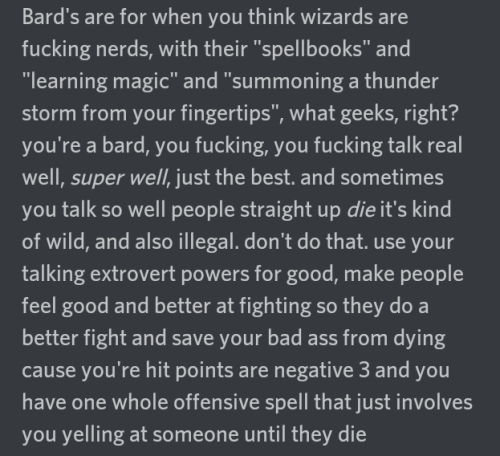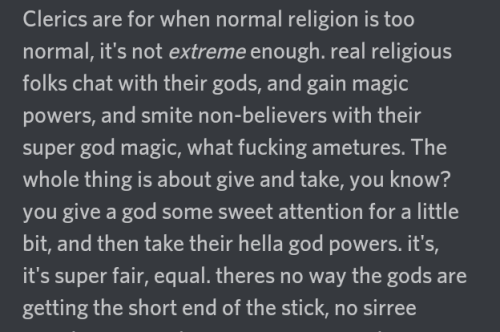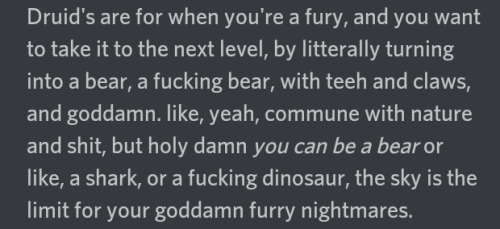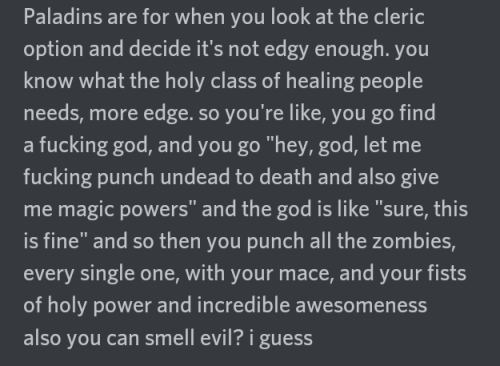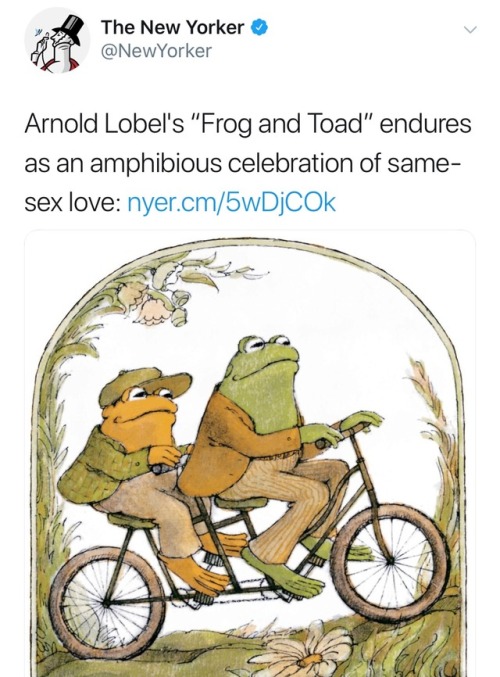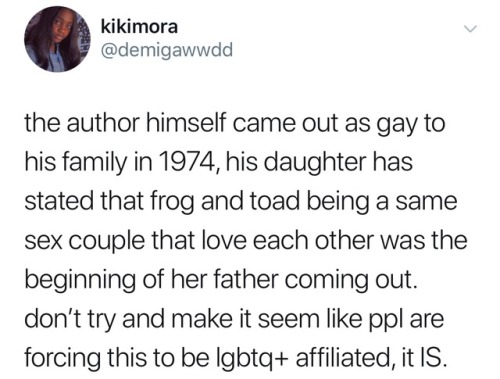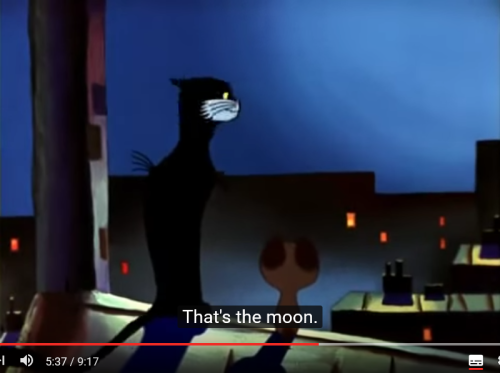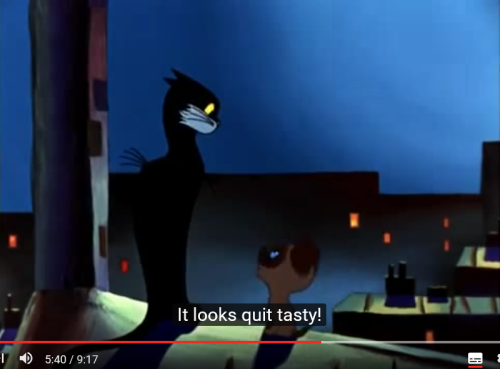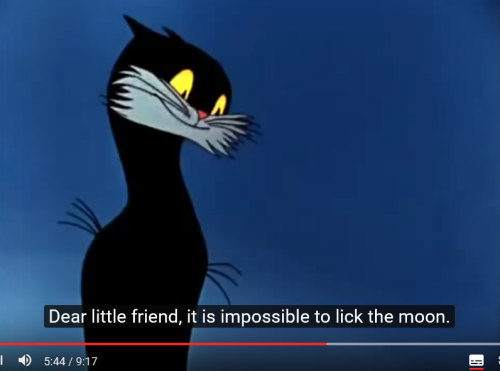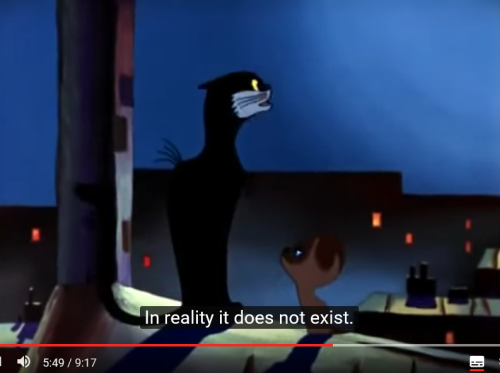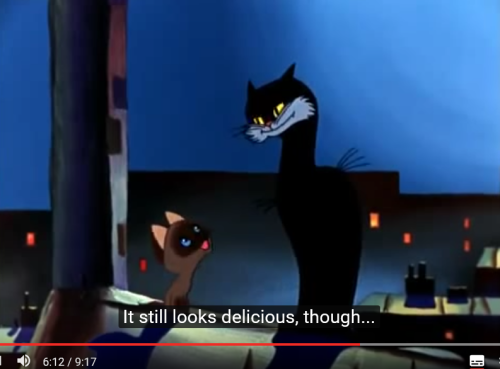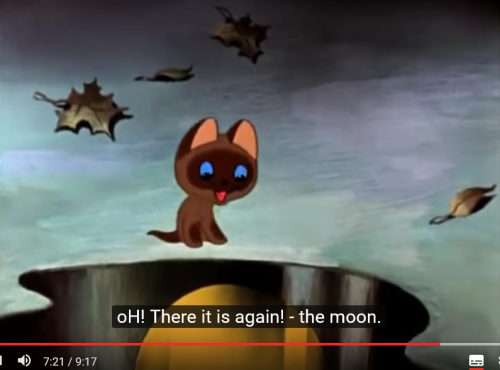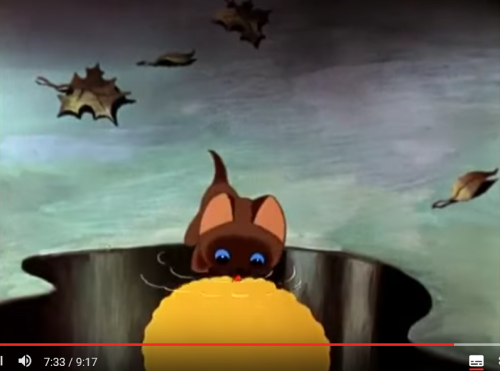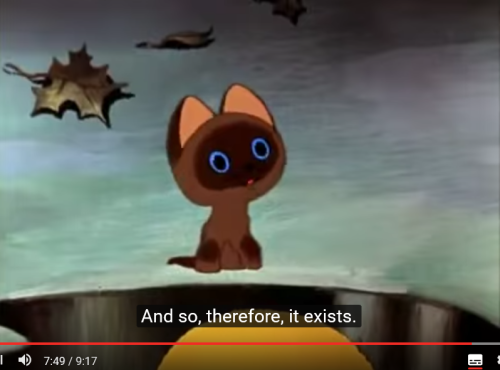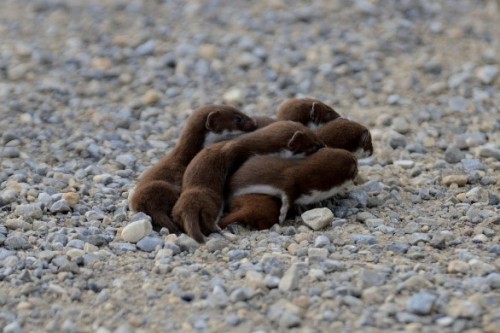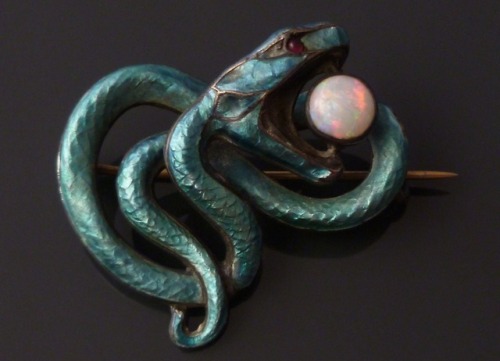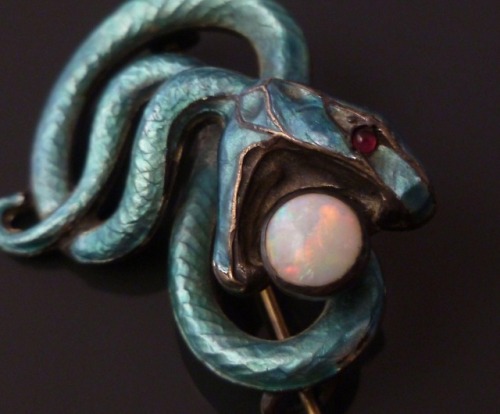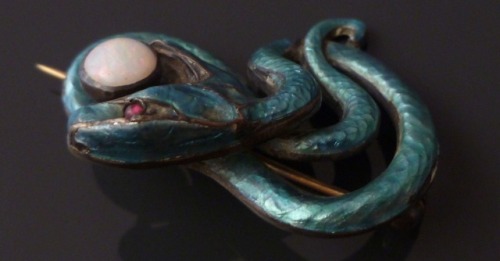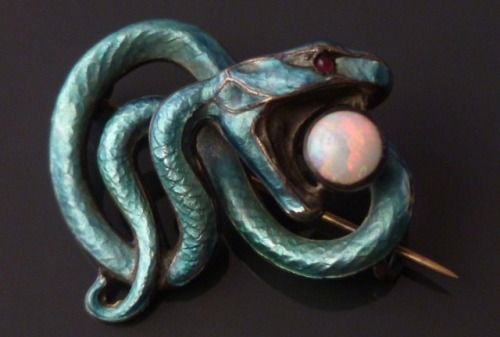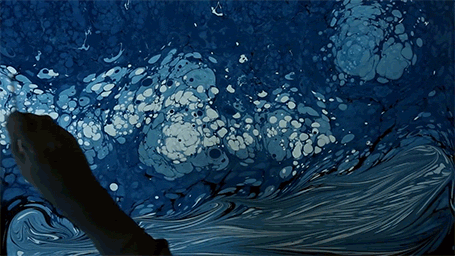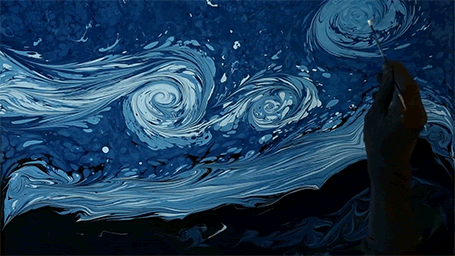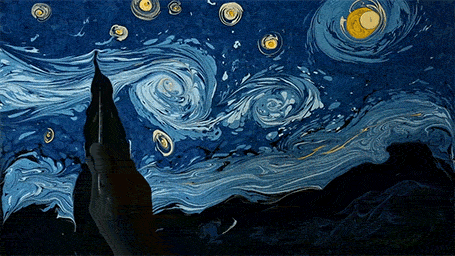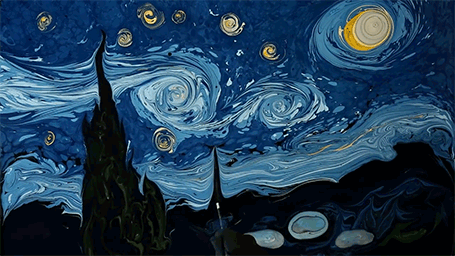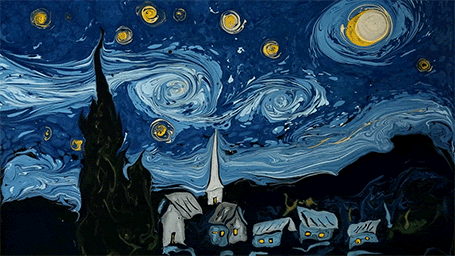22/Bisexual/ Autistic/ ADD/ Dyspraxia/Dysgraphic/ She and her pronouns/ Pagan/intersectional feminist
223 posts
Latest Posts by writingwickedwitch - Page 5
yall i fuckin love these tacky af gay shoes but theyre 150$ rip me

reblog if you hate nazis and don’t think they should speak on college campuses
I simply adore her!





smol plant witch at the supermarket with her mandrake familiar… finally finished! phew… @@
if people like the character I might do some character sketches…
My baby!!! I started reading Ms. Marvel in highschool I was maybe a couple years older than her canon age, but I still loved her so much and I still do. Kamala is what I hope my future kids will be like.

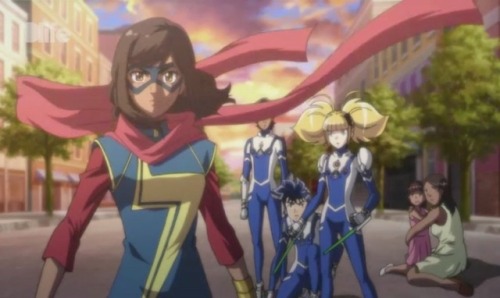


Ms. Marvel from the ‘Future Avengers’ anime.
no dubs or subtitles are provided, but you can watch the episode here.
How To Digest Books Above Your “Level” And Increase Your Intelligence
Fantasy Guide to Common Poisons
Poison is one of the best ways of dispatching a character, political enemy, unwanted spouse or annoying neighbours. Here are some of the top interesting poisons and if you don’t choose any, I’ll be adding a post on how to create your own poison. Please don’t kill anybody in real life (there I think that covers the legal side). Let’s kill some characters.
Nightshade
Or as it is more commonly referred to as Belladonna is a poisonous flowering plant. All of this plant is poison but the berries are infamously toxic. It is called Belladonna (pretty woman) as it was a cosmetic. It is poison yet it is used today in modern cosmetic surgery.

Hemlock
Hemlock is a flowering plant. All parts of the plant contain poison. It causes paralysis, mostly in the respiratory system.

Cyanide
Cyanide is a poisonous chemical. It kills by latching onto iron in the blood and constricting them, not allowing them to to transfer oxygen.

Batrachotoxin
This is a neurotoxin that lives on the sking of dart frogs. One frog has enough toxin kill around two dozen people. The poison attacks the nerves, causing paralysis.

Azaleas
Common flowers that are poisonous. It’s symptoms are nausea, drooling, vomiting, diarrhea, seizures, coma, and death. It takes six hours to work.

Arsenic
This poison causes gastric distress, burning pain, vomiting, and bloody diarrhea. Arsenic is almost virtually indectable only found when a high dose is used or if there is an almond smell off the corpse.

So apparently last year the National Park Service in the US dropped an over 1200 page study of LGBTQ American History as part of their Who We Are program which includes studies on African-American history, Latino history, and Indigenous history.
Like. This is awesome. But also it feels very surreal that maybe one of the most comprehensive examinations of LGBTQ history in America (it covers sports! art! race! historical sites! health! cities!) was just casually done by the parks service.
Publishing for Fun and Profit
So there was a list going around tumblr for a while that made it to my dash of literary journals that accept open submissions (and will pay!), but upon inspection about half of them were closed indefinitely, and I found quite a few other places that looked interesting through further research, so I wanted to post my own list.
I tried to focus on things that paid professional grade (at least 6 cents per word), were friendly to speculative fiction, and specifically encouraged diversity and writing about marginalized groups.
(Please note that as of right now I have never submitted or been published with any of these, so if anyone has experience with them, good or bad, please feel free to message or reblog this with your experiences.)
Speculative Fiction
Strange Horizons — Speculative fiction (broadly defined) with an emphasis on diversity, unusual styles, and stories that address politics in nuanced ways. 8c per word. Up to 10,000 words, under 5,000 preferred. Responds within 40 days. LGBT+ positive.
Fantasy & Science Fiction Magazine — Sci-fi, fantasy, horror, etc. 7-12c per word. Up to 25,000 words. No response times listed.
Asimov’s Science Fiction — Primarily sci-fi but accepts fantasy and surreal fiction, but no high fantasy/sword and sorcery. Prefers writing that is character driven. 8-10c per word. 1,000-20,000 words. Responds in about five weeks.
Evil Girlfriend Media — Horror and urban fantasy centered on female empowerment and defying gender stereotypes. $100 flat payment. 4,000-7,000 words. No response times given. LGBT+ friendly.
Beneath Ceaseless Skies — Fantasy with a focus on secondary worlds and characters. 6c per word. Up to 10,000 words. Average response time 2-4 weeks.
Fantastic Stories — Speculative fiction with an emphasis on diversity and literary style. 15c per word. Up to 3,000 words. Responds within two weeks. LGBT+ positive.
Fiction Vortex — Serialized fantasy and speculative fiction. $300 for featured stories, $50 otherwise. 3,500 words or less. No response times given.
Shimmer — Speculative fiction with an emphasis on diversity, strong plots, vivid characters, and beautiful writing. 5c per word. 7,500 words or less (will consider longer words with query letter). Usually responds within two weeks. LGBT+ positive.
Clarkesworld Magazine — Sci-fi, fantasy, and other speculative fiction. 10c per word up to 5,000 words, 8c per word after. 1,000-16,000 words. Responds within days usually, gives a tracking number.
Apex Magazine — Speculative fiction of all kinds. 6c per word, +1c per word for podcast stories. Up to 7,500 words, all submissions over will be auto-rejected. Responds within 30 days.
Heliotrope Magazine — Speculative fiction of all kinds. 10c per word. Up to 5,000 words. Responds within 30 days.
Lightspeed Magazine — Speculative fiction of all kinds, with creativity and originality in terms of style and format encouraged. 8c per word. 1,500-10,000 words, under 5,000 preferred. LGBT+ positive. Submissions temporarily closed for their main magazine but is accepting for their People of Color Destroy Science Fiction special.
General Fiction
The Sun Magazine — General fiction, likes personal writing or writing of a cultural/political significance. $300-$1500 flat payment and a one year subscription to the magazine for fiction (also accepts essays and poetry). No minimum or maximum lengths but over 7,000 words discouraged. Responds in 3-6 months. Physical submissions only.
One Story — Any and all varieties of fiction, “unique and interesting” stories encouraged. $500 payment plus 25 contributor copies. 3,000-8,000 words. Usually responds in 2-3 months.
Camera Obscura — General fiction. $1000 for featured story, $50 for “Bridge the Gap” award, no payment for other contributors. 250-8,000 words. Response time vary, running just over two months as of now.
Flash Fiction
Daily Science Fiction — Speculative flash fiction (including sci-fi, fantasy, slipstream, etc.). 8c per word. Up to 1,500 words, but shorter stories given priority. Response times not listed.
Vestral Review — General flash fiction. 3-10c per word depending on length to a max of $25. Up to 500 words. Response within four months.
Flash Fiction Online — General flash fiction. $60 flat payment. 500-1,000 words. Response times not listed.
Novels/Novella
Riptide Publishing — Any LGBTQ manuscripts between 15,000 and 150,000 words. Currently especially interested in lesbian romances, trans stories, asexual/aromantic stories, romances with a happy ending, and genre fiction such as urban fantasy. Also has a YA branch. LGBT+ positive.
Crimson Romance — Romance stories of all kinds, currently seeking LGBT+ stories with a focus on emotional connections and relationships, especially m/m romance. Novel (55,000-90,000 words) or novella (20,000-50,000 words) length. LGBT+ positive.
Kindle Direct Publishing
Kindle Direct Publishing — Allows you to set your own prices, create your own cover art, and make royalties off of each sell. Any and all genres are welcome and if you’re prolific and smart about how you’re publishing you can make pretty good money.
General Guide to Kindle Publishing — Gives a good rundown of the publishing process on Kindle.
101 Guide to Kindle Erotica — Great guide with lots of resources about how to make money publishing erotica on Kindle.
Publishing Comics/Graphic Novels
Here is a list of potential comic companies and what kind of open submissions they accept.
Here is a list of literary agents who accept graphic novels.
Helpful things for action writers to remember
Sticking a landing will royally fuck up your joints and possibly shatter your ankles, depending on how high you’re jumping/falling from. There’s a very good reason free-runners dive and roll.
Hand-to-hand fights usually only last a matter of seconds, sometimes a few minutes. It’s exhausting work and unless you have a lot of training and history with hand-to-hand combat, you’re going to tire out really fast.
Arrows are very effective and you can’t just yank them out without doing a lot of damage. Most of the time the head of the arrow will break off inside the body if you try pulling it out, and arrows are built to pierce deep. An arrow wound demands medical attention.
Throwing your opponent across the room is really not all that smart. You’re giving them the chance to get up and run away. Unless you’re trying to put distance between you so you can shoot them or something, don’t throw them.
Everyone has something called a “flinch response” when they fight. This is pretty much the brain’s way of telling you “get the fuck out of here or we’re gonna die.” Experienced fighters have trained to suppress this. Think about how long your character has been fighting. A character in a fist fight for the first time is going to take a few hits before their survival instinct kicks in and they start hitting back. A character in a fist fight for the eighth time that week is going to respond a little differently.
ADRENALINE WORKS AGAINST YOU WHEN YOU FIGHT. THIS IS IMPORTANT. A lot of times people think that adrenaline will kick in and give you some badass fighting skills, but it’s actually the opposite. Adrenaline is what tires you out in a battle and it also affects the fighter’s efficacy - meaning it makes them shaky and inaccurate, and overall they lose about 60% of their fighting skill because their brain is focusing on not dying. Adrenaline keeps you alive, it doesn’t give you the skill to pull off a perfect roundhouse kick to the opponent’s face.
Swords WILL bend or break if you hit something hard enough. They also dull easily and take a lot of maintenance. In reality, someone who fights with a sword would have to have to repair or replace it constantly.
Fights get messy. There’s blood and sweat everywhere, and that will make it hard to hold your weapon or get a good grip on someone.
A serious battle also smells horrible. There’s lots of sweat, but also the smell of urine and feces. After someone dies, their bowels and bladder empty. There might also be some questionable things on the ground which can be very psychologically traumatizing. Remember to think about all of the character’s senses when they’re in a fight. Everything WILL affect them in some way.
If your sword is sharpened down to a fine edge, the rest of the blade can’t go through the cut you make. You’ll just end up putting a tiny, shallow scratch in the surface of whatever you strike, and you could probably break your sword.
ARCHERS ARE STRONG TOO. Have you ever drawn a bow? It takes a lot of strength, especially when you’re shooting a bow with a higher draw weight. Draw weight basically means “the amount of force you have to use to pull this sucker back enough to fire it.” To give you an idea of how that works, here’s a helpful link to tell you about finding bow sizes and draw weights for your characters. (CLICK ME)
If an archer has to use a bow they’re not used to, it will probably throw them off a little until they’ve done a few practice shots with it and figured out its draw weight and stability.
People bleed. If they get punched in the face, they’ll probably get a bloody nose. If they get stabbed or cut somehow, they’ll bleed accordingly. And if they’ve been fighting for a while, they’ve got a LOT of blood rushing around to provide them with oxygen. They’re going to bleed a lot.
Here’s a link to a chart to show you how much blood a person can lose without dying. (CLICK ME)
If you want a more in-depth medical chart, try this one. (CLICK ME)
Hopefully this helps someone out there. If you reblog, feel free to add more tips for writers or correct anything I’ve gotten wrong here.
Lifestyle tips for witches
I see a lot of blog posts about tips for incorporating witchcraft into your daily life, and honestly, a lot of it is fluff and garbage. Here’s some actual tips that can honestly and actually improve your practice.
Meditate daily. It doesn’t have to be for long, 10 minutes is great. I find doing it right before bed really helps me get to sleep easier.
Read. If you read regularly, every once in a while instead of reading for pleasure read an occult text. In addition, I find even pleasure reading can help you improve visualization abilities.
Observe. Take a moment out of your day to just observe everything going on around you. Focus each of your senses and observe that moment in full clarity.
Daydream. Honestly. It helps with visualization. If you get really into it, let your brain go to autopilot and observe where it goes.
Make a sigil. You don’t even have to cast it right yet, save it for later. The process is easy and it takes a few minutes out of your day tops. When you forget what it means, cast it on some other day by your preferred method.
Automistic writing. It can be fun. Keep a journal of whatever you write down and see if you can pick out any symbolism or themes within it.
Divination. It’s easy as hell to do a simple divination daily. If you don’t have time to interpret it, record your results and go back later.
Take a moment when you wake up to dwell on your dreams. If you’re feeling particularly saucy, keep a dream journal.
Bathe. It’s not related to magick, but it’s relaxing and nobody likes a stinky occultist. No it won’t magically cleanse you, but it certainly will physically.
Keep track of the planetary days and hours. If the moment strikes you, do a little something in the hour and day of a planet you want to have more influence on you.
Do a daily banishing ritual. Either design one yourself, or choose one that resonates with you. Once practiced, a banishing ritual takes 10 minutes tops. Do it before bed or when you wake up.
These are all easy things, they don’t take much time or energy, and they go a long way towards helping improve your practice. Instead of taking your regular routine and pretending it’s already inherently magical, take the miniscule time and energy to fit a few of these into your day. It’s honestly not hard at all.
Princess Tutu and Grand Narrative

Once upon a time, there was a clumsy school girl granted the power to transform into the magical ballerina Princess Tutu.
“Once upon a time” is a familiar phrase used to connect stories that take place in lands distant and times different from one another into the same fairytale world. Each episode of the anime Princess Tutu begins with this familiar phrase and then proceeds to tell a story both known and new, where Hans Christian Anderson’s Ugly Ducking becomes Odette, the Swan Queen, from Swan Lake, thanks to the magic of the mysterious Drosselmeyer, who bares a striking resemblance to the character of the same name from The Nutcracker. Princess Tutu is not just a retelling of a handful of fairy tales, it’s an adaptation of stories across literature, ballet, opera, and of course, anime. Each piece of Princess Tutu’s narrative belongs to worlds larger than its own. The series challenges paradigms about typical narrative creation by weaving together multiple “grand narratives”.
While working as an editor for Kadokawa Shoten in the late 80s, Otsuka Eiji wrote a paper called “World and Variation: The Reproduction and Consumption of Narrative” in which he explains the idea of the grand narrative. An individual story only gives the audience a small glimpse into that wider world that the story is set in. This wider world is full of countless narratives told from countless perspectives that make up the grand narrative. Eiji uses the Gundam franchise to illustrate this concept where any given episode of the anime is a small snapshot of narrative within the larger universe(s) Gundam takes place in. Eiji explains, “Countless other [stories] could exist if someone else were the main character.”
Everyone is the main character of their own story. But most of these stories that make up the grand narrative of a world are hidden from view. It’s impossible to tell every story at once and have it be comprehensible. Instead we can only consume small bite-sized narratives that give us a snapshot of the (hopefully) interesting parts of a protagonist’s life. But who, exactly, is controlling these smaller narratives? This is a question faced by the characters of Princess Tutu.
The concept of shifting protagonists and expanding the audience’s view into the grand narrative heavily ties into Princess Tutu’s premise. The anime’s story is catalyzed by Drosselmeyer, the author of a fictitious book called The Prince and The Raven. The book’s ending is a stalemate between the titular characters so Drosselmeyer decides to promote the minor character of Princess Tutu to the role of main character to help the story move forward.
As you can probably tell by the name, Princess Tutu is heavily influenced by ballet. One of the show’s more significant influences is Swan Lake. Through the anime’s re-purposing of Swan Lake’s Odette as a magical girl, Princess Tutu continues to uphold ballet’s tradition of adapting the story for its own purposes.

Princess Tutu and Odette
The basic story of Swan Lake is about a prince falling in love with a girl cursed to be a swan from sunrise to sunset by an evil sorcerer. The sorcerer tricks the prince into confessing his love for his daughter, Odile, instead of the swan girl thus dooming the swan girl’s chance at true love and breaking the curse.
Amanda Kennell, an American scholar, outlines in her paper “Origin and Ownership from Ballet to Anime” Swan Lake’s production history and the evolution of the ballet’s narrative. The original staging in 1877 had the story end with the villain going unpunished and the two lovers drowning in a flood. In a revival staging from 1895 the villain was defeated and the two lovers reunited in heaven after throwing themselves into a lake. In a single scene production called The Magic Swan from the 1940s, the iconic “black swan” was introduced setting the precedent for the same ballerina to play the role of Odette and Odile in striking white and black costumes. And finally, another staging in 2006, not only adopted the White and Black Swan motif, but also changed the ending once again so that the prince kills the villain and he and Odette live happily ever after.
Despite each staging of the classic having significant differences, none of the variations are cast away as counterfeits. The value of the production isn’t in how close it is to the original Swan Lake but instead in the relative merit of each variation. In fact, it doesn’t really matter which you consider “the original” where the additions made by each carry their own merit and add to Swan Lake’s grand narrative. In this same regard, it would be acceptable to consider Princess Tutu another variation on the world of Swan Lake’s grand narrative.
There is terminology for this phenomenon in Kabuki theater. Eiji points out in his paper the similarities between the concepts of Sekai (world) and Shukou (plot) from Kabuki theater and his ideas of the grand narrative and the smaller narratives.
In Kabuki, Sekai represents the world a story takes place in and Shukou represents the story that is a product of that world. Each staging of a Kabuki play is its own Shukou derived from either a single Sekai or the mixing of Sekai. What matters in creating a good performance is not necessarily conveying the Sekai but instead the relative merit of the Shukou’s take on things. No performance is exactly the same and different actors bring different strengths to a performance and in turn provide a different experience for the audience’s entertainment. This of course carries over to more art forms than just Kabuki, classic ballet is in a similar position where entire songs are sometimes re-choreographed just to match the strengths of an individual ballerina. Ballet in particular has a long tradition of making minor and major changes to suit an individual performance. Whether it be tweaking choreography or straight up giving the story a different ending. The evolution of Swan Lake’s production is an excellent example of how productions of what are considered to be the same story can dramatically vary.
But Princess Tutu borrows from more stories than just Swan Lake. This brings us back to Kabuki and the idea of mixing Sekai in order to create another Shukou.
Princess Tutu takes pieces of classic stories and rearranges them to create something simultaneously familiar and completely new. Princess Tutu is not forging a new Shukou from only Swan Lake’s Sekai, but instead is connecting the canon of European literature and performing arts together into an even more extensive grand narrative.
Just look at the series’ opening for example, where Swan Lake and The Nutcracker are intertwined with one another as the anime’s titular character is dressed in the ballet costume of Odette and dances to The Nutcracker’s Flower Waltz to simultaneously combine the worlds of two ballets while producing an entirely new moment unique to the Princess Tutu anime.
The anime ends on the implication that if one person tries to control a story and the grand narrative it’s connected to, that person will fail. Princess Tutu is an excellent reminder of how stories are dynamic. Stories end up taking on a life of their own evolving, expanding and being reworked by both creators and consumers.
Eiji explains that once the consumers feel they have a grasp on the grand narrative they are free to produce their own small narratives from it. This is exactly how its creators forged Princess Tutu from the grand narrative of classic literature and performing arts. Just as mangaka can’t help it if a doujinshi adds to the narrative of their original story, Travosky can’t control the new life his ballets have taken on in Princess Tutu. Stories will take on a life of their own, abandon the need for an original and become a part to a larger grand narrative to be consumed and reworked over and over.
You hear that? That's the sound of my vagina clanking shut at the sight of those nails.
i wrote about stigma around fake nails in the queer community, and about how i won’t take off my long nails for sex. tinder link in bio.

this is a harvest mouse appreciation post

literally the cutest animal ever in history look at this lil fuzz

tiny bean ! friendly bean

they climb on basically everything. probably to get closer to kiss u

if this mouse gets any more disney than this it will probably break out into song

just look at this tiny nugget !!!

harvest mice use their tails for stability while climbing but also to be unnecessarily cute. this deters predators

tiny feet !!!!! tiny toes !

momma with itty puffs

kisses !! 1 hit KO

they are literally too small how dare

harvest mice !!!

harvest mice !!!!!!!!!!!!!!

harv e s t m i c e !! ! !!!

thankyou for your time
Useful Writing Resources
This is an extensive list of resources for every problem you could come across while writing/planning/editing your novel. Use it well;)
{ *** } Indicate a Highly Reccommended Resource

Planning/outlining Your Work
How To Outline ***
Zigzag Method : Creating Plots
How to Plot a Romance Novel
Seven Great Sources of Conflict for Romances
Let’s talk about brainstorming
Writing Something With Meaning ***
Past Or Present Tense? : How To Decide
Writing Your Work
How To Write A Fabulous Chapter #1 ***
How to Build a Romance Thread in Your Story
The Big Book Of Writing Sex ***
6 Ways to Get Your Readers Shipping Like Crazy
Romance Writing Tips ***
20 Tips for Writing Lovable Romance Novel Heroes
7 Ways To Speed Up Your Writing ***
80+ Barriers to Love: A List of Ideas to Keep Romantic Tension High
9 Romance Writing Mistakes to Avoid
Removing the Creeps From Romance
19 Ways to Write Better Dialogue ***
50 Things Your Characters Can Do WHILE They Talk ***
How To Write Action And Fight Scenes
10 Steps To Write Arguments
9 Ways To Write Body Language
Writing Good Kissing Scenes
Writing Murders
Create And Control Tone ***
Tips for Writing Ghost Stories
Incorporating Flashbacks
12 Tips To Avoid Overwriting ***
Characters
Behind the Name
Top Baby Names
Looking for a name that means a certain thing? ***
7 Rules of Picking Names
Most Common Surnames ***
Minor Character Development
Writing Antagonists, Antiheroes and Villains
Characters With Enhanced Senses
5 Tips to Help You Introduce Characters
How Do You Describe a Character?
How To Write Child Characters
36 Core Values For Building Character
Questions To Answer When Creating Characters ***
4 Ways to Make Readers Instantly Loathe Your Character Descriptions
5 Ways to Keep Characters Consistent
Character Archetypes
25 Ways To Fuck With Your Characters
Building Platonic Relationships Between Female Characters
9 Simple and Powerful Ways to Write Body Language
33 Ways To Write Stronger Characters
Conveying Character Emotion
How to Make Readers Love an Unlikable Character…
How to Create Powerful Character Combos
How To Describe A Character’s Voice ***
Describing Clothing And Appearance ***
Career Masterpost ***
Creating Your Character’s Personality ***
Character Flaws ***
Editing
DON’T EDIT>>> REWRITE THE WHOLE THING FIRST
Ultimate Guide To Editing Each Aspect Of Your Work ***
Why You Would Read Your Novel Out Loud ***
Grammar and Punctuation ***
How To Write A Captivating First Sentence
10 Things Your Opening Chapter Should Do: A Check-List for Self-Editing ***
Saving Your Story: Finding Where It Went Wrong
How To Condense Without Losing Anything
The Stages Of Editing
Dialogue/Description Balance
3 Proofreading Tips
The Short Story Form
Chapter & Novel Lengths
Anatomy Of A Novel : Chapters and Parts ***
How To Write Chapter After Chapter Until You Have A Book ***
Where Chapter #2 Should Start
Step By Step Guide To Editing Your Draft
Writing Tool: CTRL-F (How And Why You Should Use It) ***
How To Kill A Character
25 Steps To Edit The Unmerciful Suck Out Of Your Story
5 Ways To Make Your Novel Helplessly Addictive ***
Setting
{Setting} How To Describe Setting In Your Stories ***
20 Questions To Enhance Setting
How To Bring Your Setting To Life
Miscellaneous Resources You Can Use In Between
How to Write from a Guy’s POV
The Emotional Wounds Thesaurus
Text To Speech Reader
Compare Character Heights
A Visual Dictionary of Tops
Writers Helping Writers
7 Tricks To Imrove Your Writing Overnight
Work Out/ Word Count : Exercise Between Writing ***
Most Important Writing Tips ***
Let’s talk about diversity in novels
Letting Go Of Your Story
Keeping A Healthy Writing Schedule And Avoiding Procrastination ***
How To Create A Good Book Cover
Write or Die
Tip of my Tongue
Character Traits Form
Online Thesaurus
Writing Sketchy/Medical/Law
Coma: Types, Causes, etc
Tips for writing blood loss
Gunshot Wound Care
Examples of Hospital Forms
Common Legal Questions
The Writer’s Forensics Blog
Brain Injury Legal Guide
Types of Surgical Operations
Types of Mental Health Problems
A Day in the Life of a Mental Hospital Patient
Global Black Market Information ***
Crime Scene Science
Examining Mob Mentality
How Street Gangs Work
Writers’ Block Help/ Productivity
Story Plot Generator
@aveeragemusings ‘ Cure To Writers’ Block ***
50 Romance Plot Ideas
Reading Like A Writer ***
Defeat Writers’ Block
Writing In A Bad Mood ***
Writers Block
When You’ve Lost Motivation To Write A Novel ***
What To Do When The Words Won’t Flow ***
9 Ways To Be A More Productive Writer
“I Cannot Write A Good Sentence Today” (How To Get Over It) ***
Real Writing Advice ***
Info You Need To Know & Words You Didn’t Think Of
A Writer’s Thesaurus ***
Words To Describe… ***
Words & Phrases To Use In Your Sex Scenes ***
Colors (An Extensive List Of Colors)
List Of Kinks & Fetishes ***
List Of Elemental Abilities
inkarnate.com : World Creator And Map Maker For Your Imaginary Setting
Body Language Phrases
List Of Legendary Creatures
How To Write Magic
Hairstyle References
Hemingway : Writing Checker
Body Types: Words To Describe Bodies and How They Move Around
Poisonous Herbs and Plants ***
The Psychology of Color
The Meaning behind Rose color
Types of Swords
Color Symbolism
How a handgun works
How to Write a Eulogy
Types of Crying
Avoiding LGBTQ Stereotypes ***
Superstitions and More
The 12 Common Archetypes
Language of Flowers
12 Realistic Woman Body Shapes
Using Feedback And Reviews
Turning Negative Reviews Into Positive Ones ***
Proofreading Marks : Easy Symbols To Make Reviewing/Feedback Easier ***
Authonomy Teen Ink Figment Fiction Press ReviewFuse
These Are Trusted Critique Sites ;)
Charlotte Brontë: Here’s my novel about a young governess who falls in love with a charming asshole edgelord who keeps his wife in the attic
Emily Brontë: Here’s my novel about a tragic orphan and a young lady who torture each other and call it love
Anne Brontë: Here’s my novel about a woman who leaves an abusive marriage and nabs herself a hot young Yorkshire sheepfarmer who Treats Her Right
Me: Oh thank God, at least one of you is sensible.
So, how far along are you on Diego's route are you all caught up? I don't want to accidentally spoil anything for you.
Does anyone want to talk about Heavanfall is for lovers with me? Especially Antonio’s route. I have so many opinions and theories.
Does anyone want to talk about Heavanfall is for lovers with me? Especially Antonio's route. I have so many opinions and theories.
Antonio's Route
Spoilers for anyone who hasn't played his route, Diego's or Vanessa's yet!
Finaly! We get some confirmation for the multiple hints that MC isn't a normal human!
Besides the bombshells dropped about the MC's parents and ancestor we knew the family wasn't normal but now we have something even bigger.
Also, I would like to name Antonio MurderVamp Husband.
The world of modern aesthetics owes so much to Jean Pettine yall dont even know

